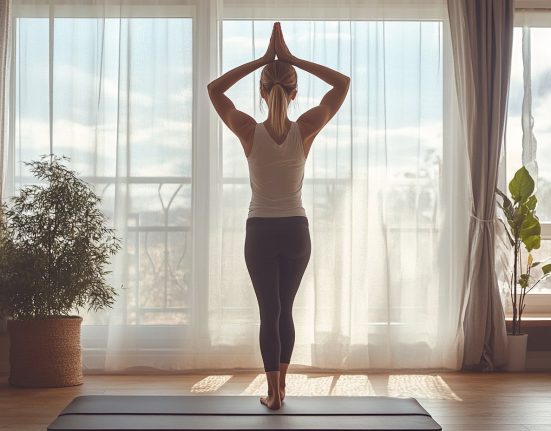Time to get excited to sweat.
Low energy. Busy schedules. Oversized expectations. These are just some of the common barriers (excuses?) that can come between you and your fitness goals. You already know that regular exercise provides a plethora of health benefits—it can lower blood pressure, improve sleep, reduce risk of cardiovascular disease, boost brain function, and maintain metabolic health and immune system function (to name a few). But sometimes actually getting up and moving is simply easier said than done. Next time you’re less than motivated to work up a sweat, tap into these expert- and science-backed secrets for the push you need.
1. Treat yourself to a new outfit.
Many people find that buying themselves a new pair of leggings, a sports bra, or a top is enough to motivate them for a workout. There’s the novelty of it, for sure—you’ll be excited to wear and show off something new. But there’s also a psychological phenomenon called “enclothed cognition” that describes the uncanny influence that certain clothing has on our mindset and physical experience. Putting on a workout outfit that makes you feel good can help you get in exercise mode, feel confident, and expect to have a positive experience.
2. Get fitted for new kicks.
As if the above tip hasn’t already inspired you to go shopping, those five-year-old running shoes not only look like they’ve seen better days, but worn-down arch support and shock absorption can set you up for injury. And if part of the reason you dread working out is because it’s painful or uncomfortable (especially in your feet and knees), the solution may be some fresh sneakers. The answer? Get fitted by a pro to find the right shoe for your feet, your style, and your activity of choice, says Heather Milton, senior exercise physiologist at NYU Langone Sports Performance Center. Today’s running shoes are “no more than 10 ounces, so you can carry them around in a bag and pull them out at the ready,” she says. Say goodbye to the “I didn’t bring my shoes to work” excuse.
3. Keep things interesting.
If your usual elliptical routine bores you senseless—why keep doing it? Grab a friend and go for a scenic bike ride, or mix things up with a group kickboxing class. Both boredom and plateauing results can be motivation buzz kills. To keep your fitness commitment strong, Milton suggests experimenting outside of your comfort zone (plus, variety is excellent for both the brain and the physical body). “Try something you think is ridiculous,” she says. Don’t be afraid to bust out that ancient jazzercise video: “Having fun is important! Laughing at yourself while working out with Richard Simmons will make you smile—not to mention, laughing is good for your abs.”
4. Be ultra-prepared.
You’ve heard it before, but that’s because it works: Preparing for a healthy week sets you up for success. Weekend meal prep is important, but that’s just half of the equation. “Pack three or four gym outfits on Sunday with a snack—protein bar, nuts—for the whole week,” recommends Sean Wells, DPT, PT, owner of Wells Physical Therapy in Naples, Fla. “Sometimes just getting to the gym is the hardest part, but you’re more likely to keep your commitments if you’re ready.” Working out at home? Lay your gear out on the floor or a chair in your room so it’s in plain sight and ready for you. Using a planner to track your fitness goals can be both organizational and motivational.
5. Push just a liiittle bit harder.
Just finished a high-intensity 20-minute run? Congrats—now keep going, says Wells. Sometimes we’re motivated enough to start a workout, but not enough to really challenge ourselves, which is where the true benefits take form. When you think you’re finished, or you’ve reached your initially determined time, try adding on just three to five more minutes. That’s it (you can do it!). “Spend a couple extra minutes on the elliptical or five more minutes walking,” he says. If you’ve gotten this far, a few more minutes are attainable, but challenging, which adds up to personal bests and records that make you feel proud. Not to mention, each little nudge gets you that much closer to your wellness goals.
6. Wear your activewear beyond the gym.
Wearing yoga pants out and about—even if you’re going to brunch, not yoga—is nothing new. But since athleisure clothing is not only trendy, but commonplace, gym gear has suddenly become even more acceptable outside the studio. Use this to your advantage, suggests Milton. “Wear your sports bra under your sweater, or yoga pants instead of leggings,” she says. If you find yourself with some extra time, squeeze in a quick gym visit, spin class, or workout video at home—you’re already dressed! Plus it only takes 15 to 20 minutes of activity to give you an energy boost to get through the rest of the workday, she adds.
7. Do your own thing.
A lot of people like to be told what to do during a workout class or video—and that’s great. But if that format doesn’t appeal to you, why force yourself into a routine you hate or one you’ve done so many times you’ve lost interest? Research suggests that taking control of the format and progression of your workout can make a big difference. When participants were able to choose the order in which they completed an exercise routine, it led to increased repetitions and overall engagement with the workout, according to a 2014 study published in Psychology of Sport and Exercise. So while group classes and streaming platforms can be fantastic, once you’ve mastered the basics, try mixing things up on your own.
8. Focus on health and happiness—not your hips.
Intrinsic motivation means you’re working out because it makes you feel good—both physically and emotionally. It means you do it on your terms and because you want to. Extrinsic motivation, on the other hand, means you exercise to fit into a bridesmaid dress or look a certain way before an upcoming reunion. When you focus on the deep wellness benefits like feeling stronger, boosting endorphins, and getting your heart pumping—rather than setting goals based on your appearance or external expectations—you’re more likely to maintain a positive body image and feel satisfied with your fitness accomplishments. Slowly but surely, “I have to workout” will become “I get to workout.”
9. Turn everyday activities into mini-workouts.
The connection between day-to-day activities and traditional exercise is more important than you might think. Consider every time you drop something and bend to pick it up (squatting movement) or when you lift a heavy box onto a high shelf (pressing movement). Proper form both in and out of the gym can make these regular activities easier on your body long-term. “It sounds archaic, but I actually scrub my kitchen floors with a dish sponge,” Milton says. “It may take longer, but putting in a little elbow grease improves core and upper body strength.”
10. Think about positive memories only.
Remember that time you finally beat your mile time record? Home in on that feeling. But then there was that time you went to the gym and felt terrible—the lights were too bright, your back was hurting, and you were huffing and puffing after three minutes of cardio (so you left). Let that one go. Research from 2015 out of the University of New Hampshire found that thinking back on positive fitness memories can help you be more active now, while holding on to unpleasant moments in your exercise history can discourage you.









